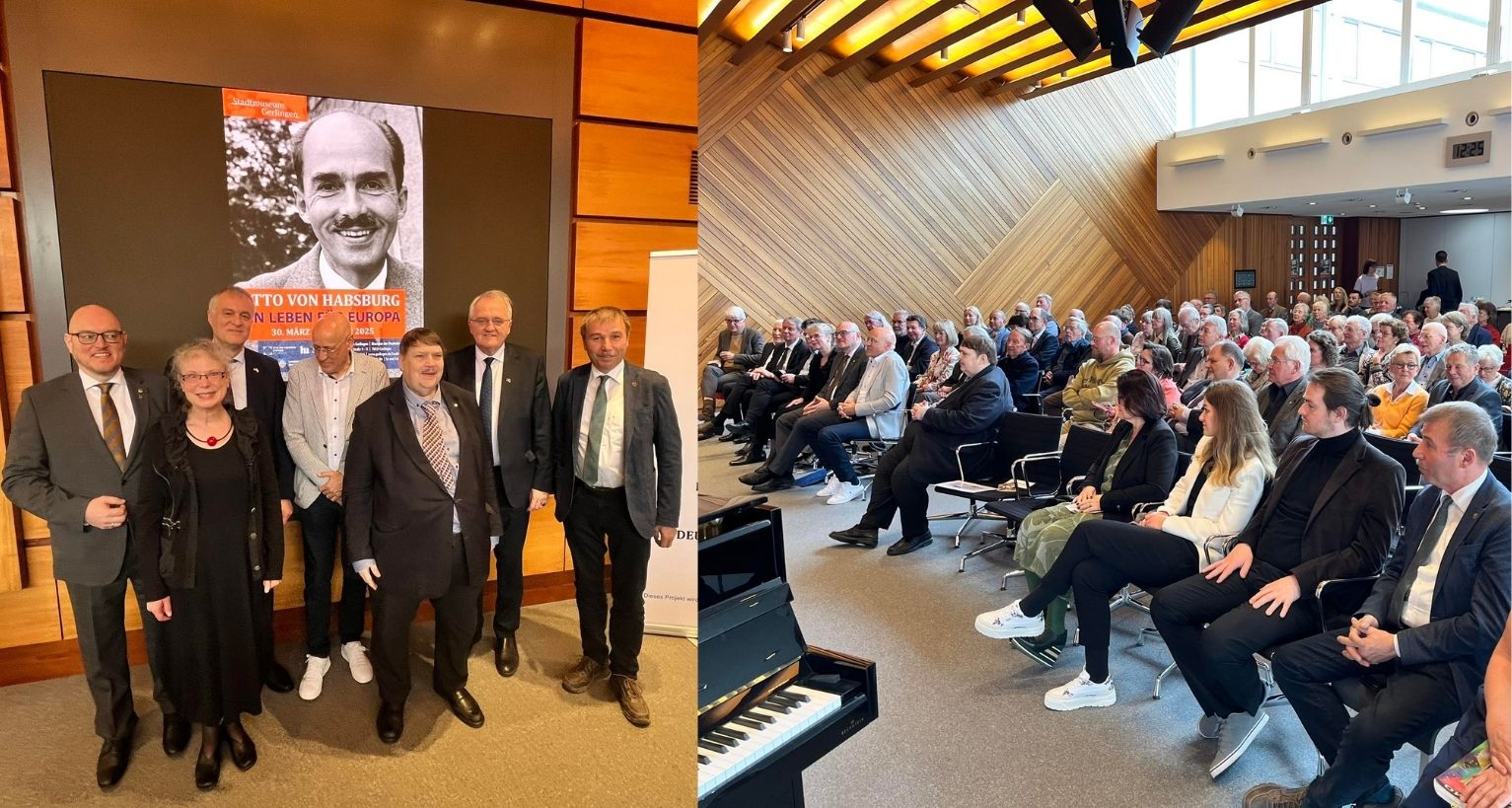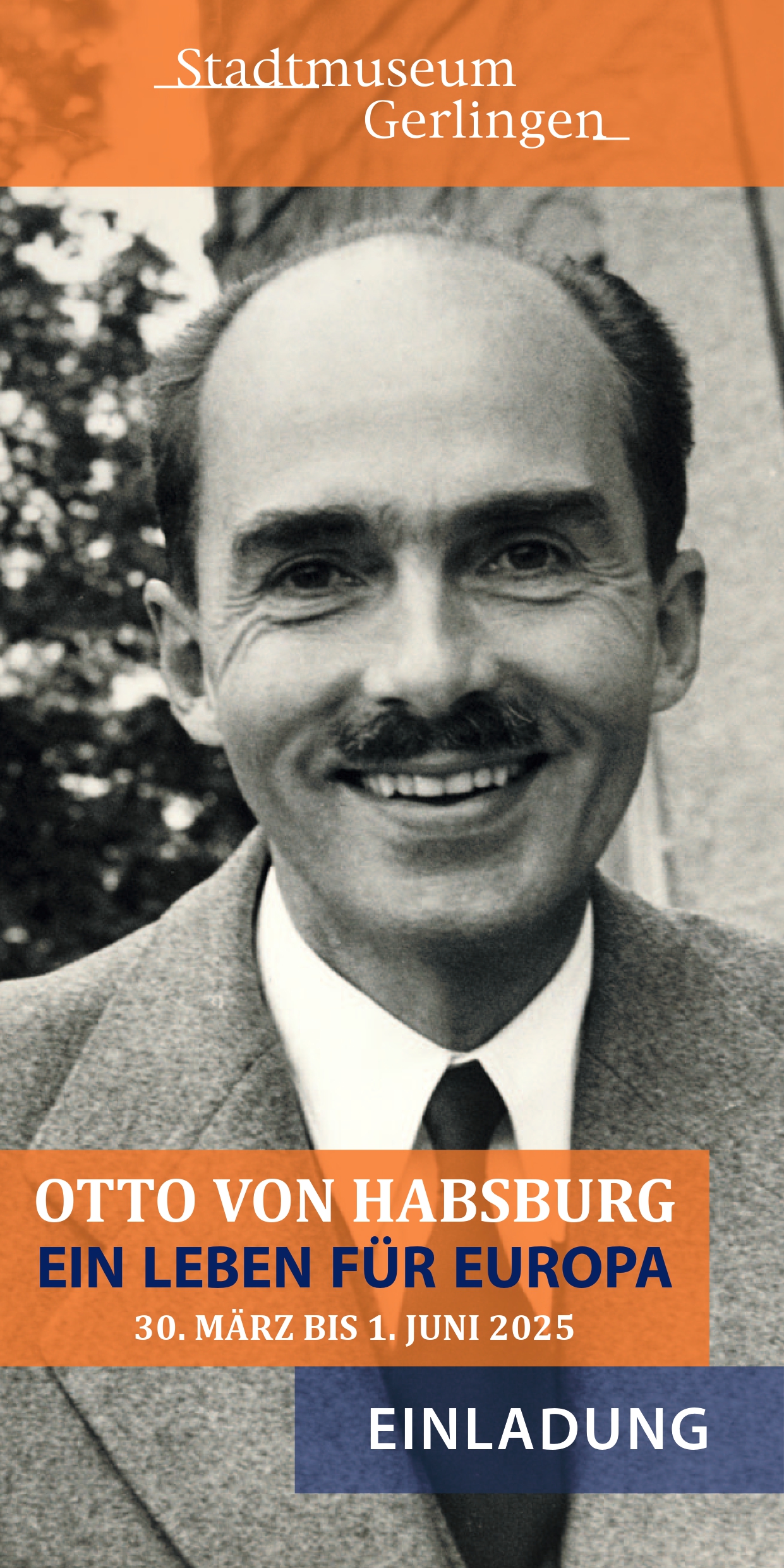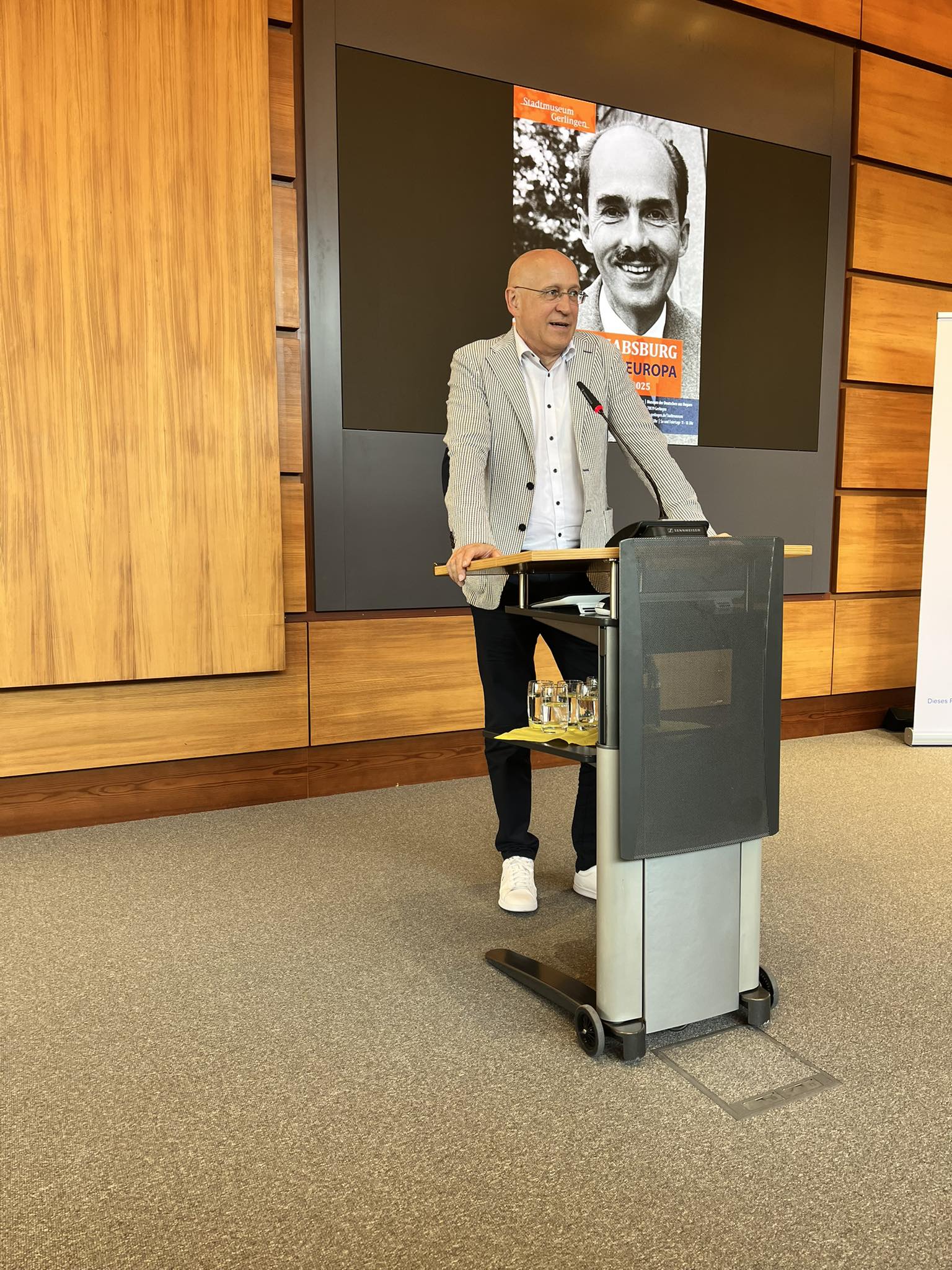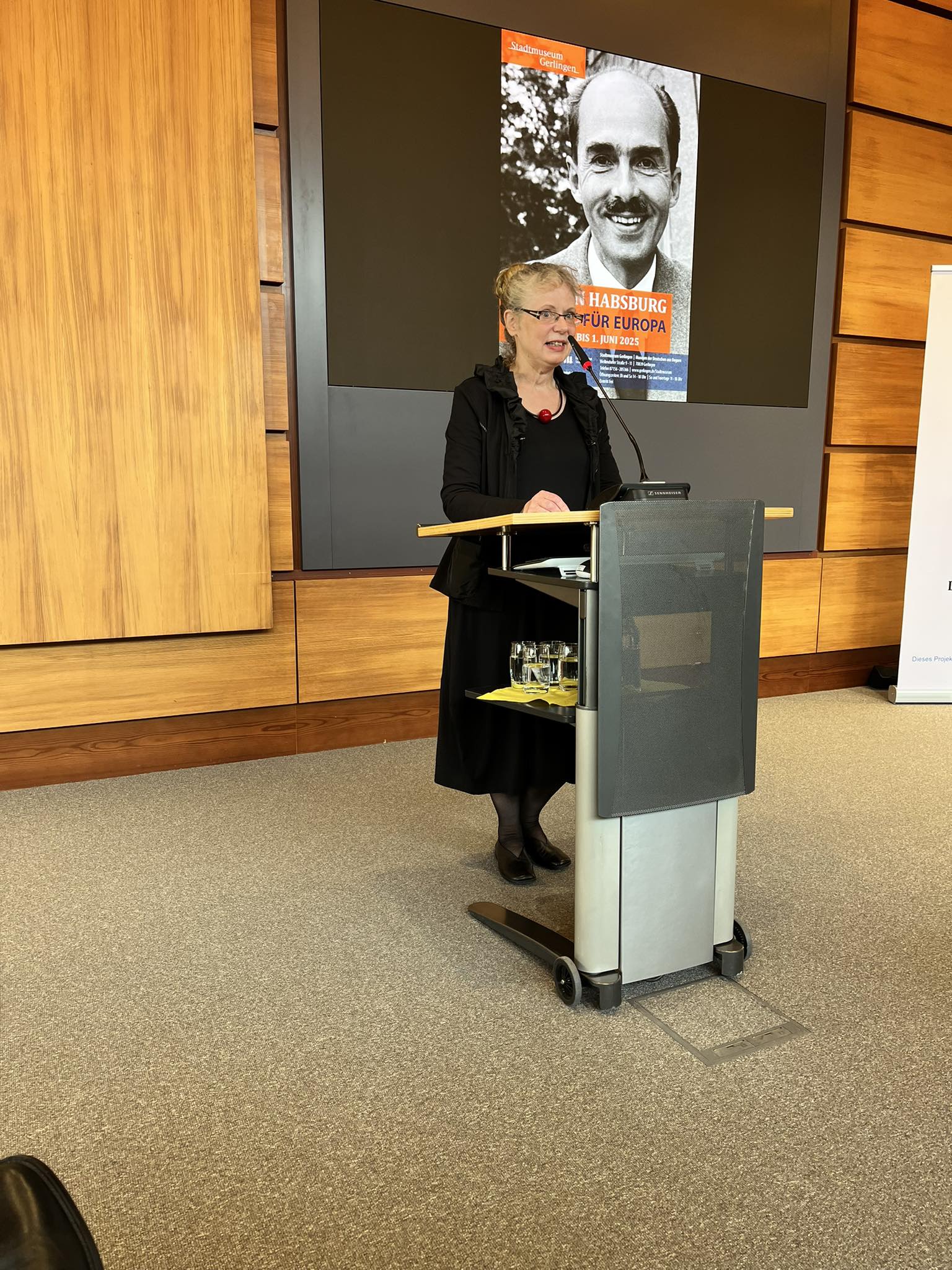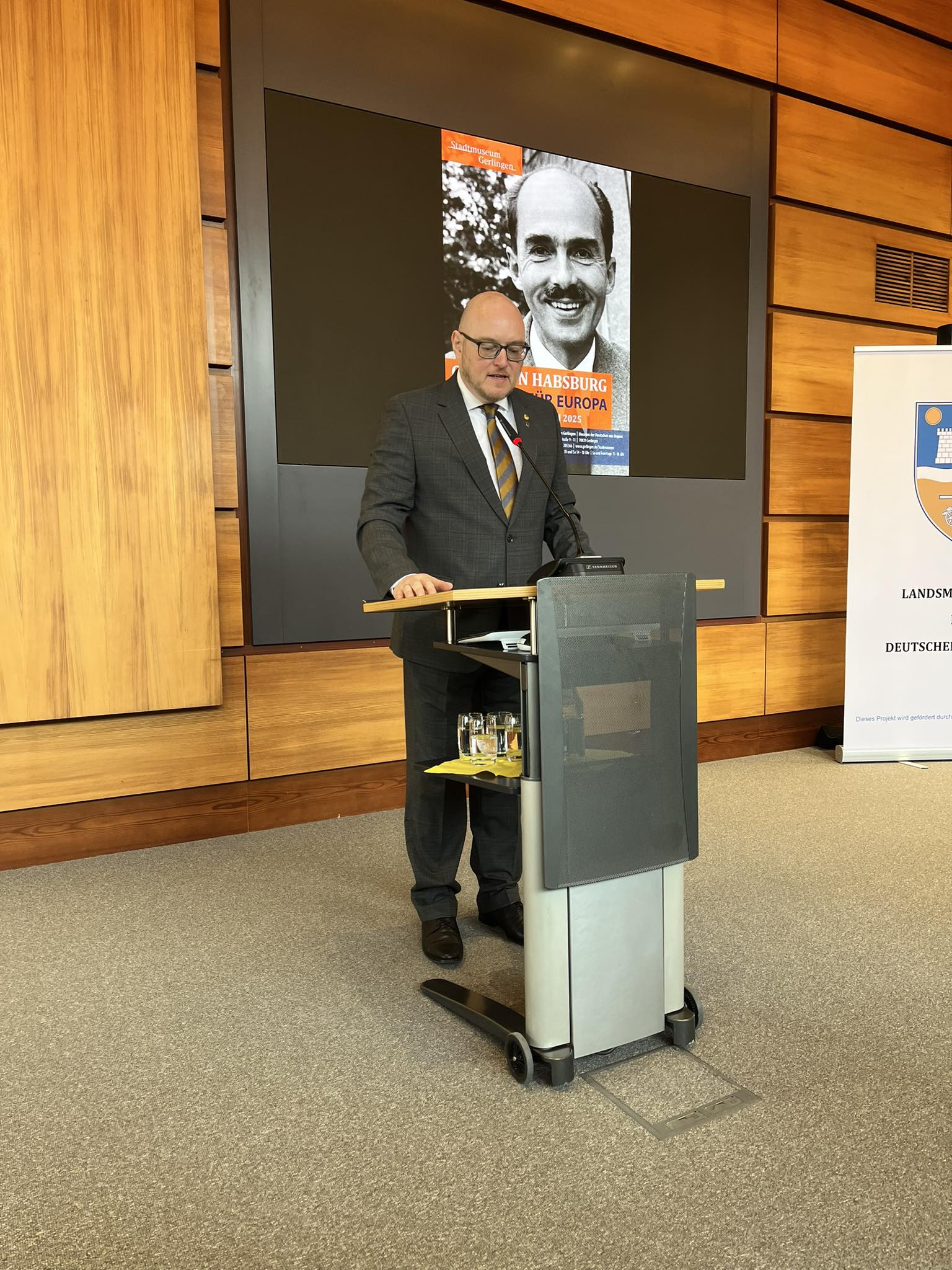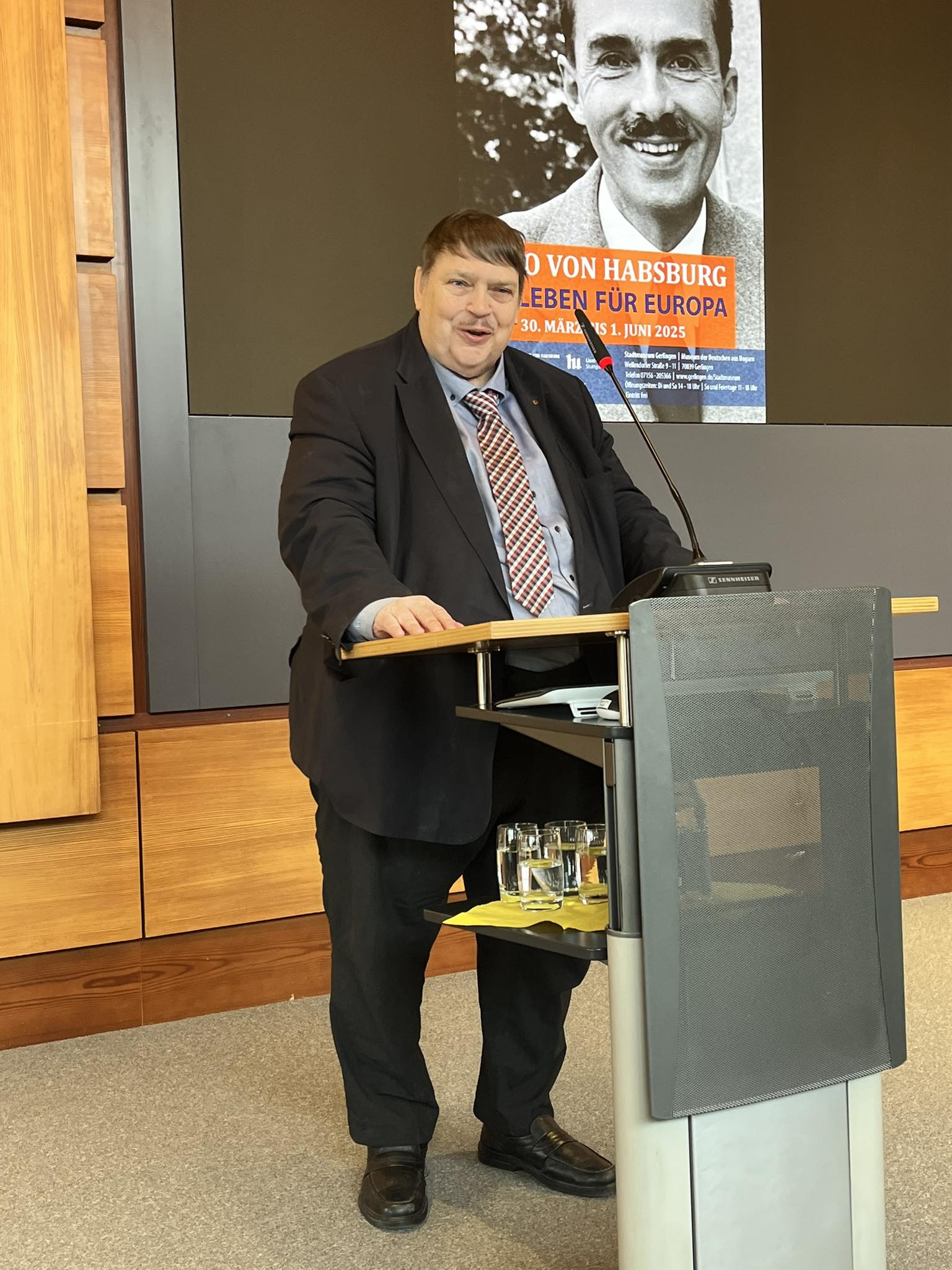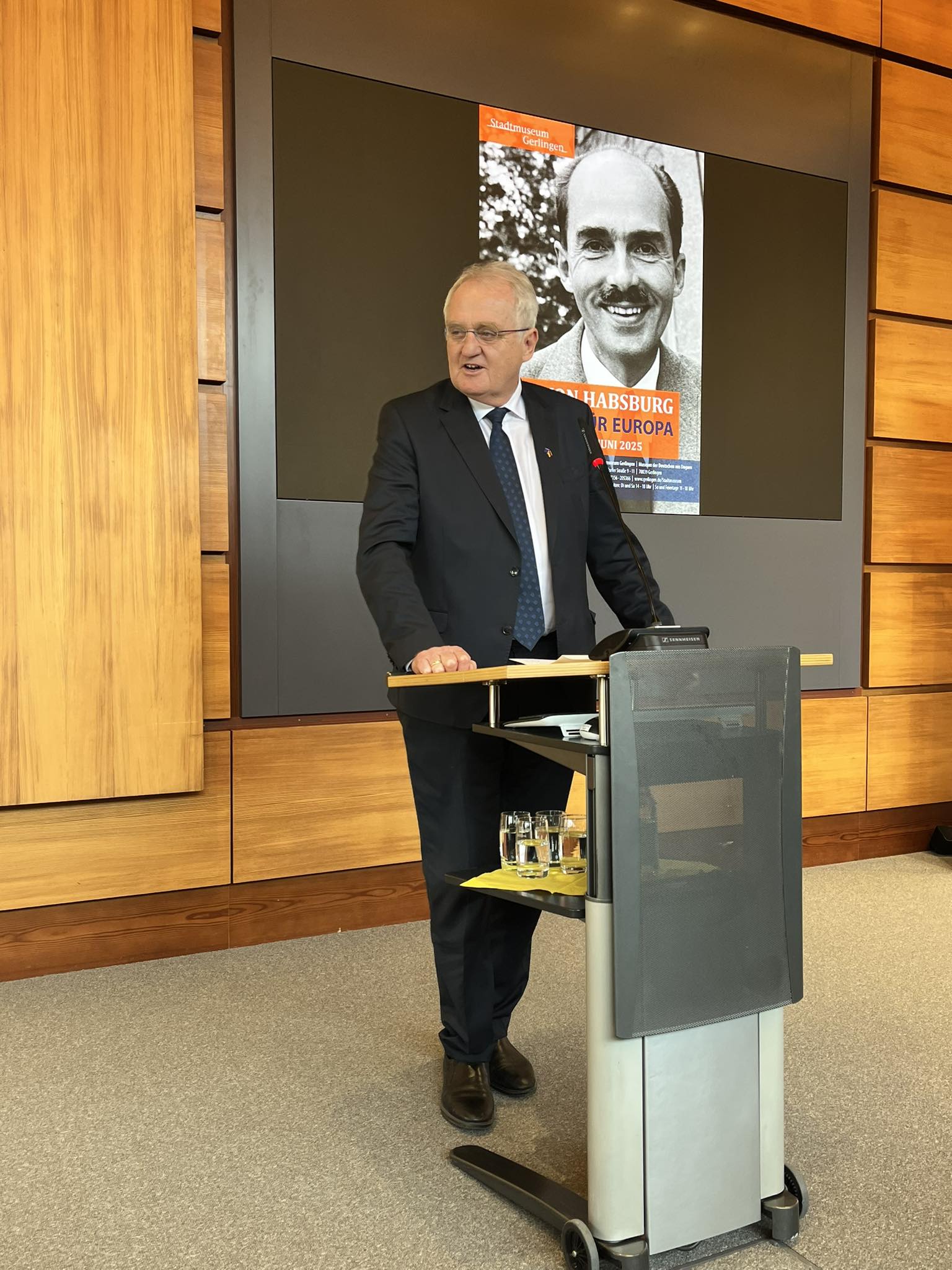The exhibition opened to great interest on 30 March at the Stadtmuseum Gerlingen, the Museum of the Germans from Hungary. Mayor Stefan Altenberger welcomed the audience, followed by speeches by the director of the institution, Birgit Knolmayer, and Joschi Ament, president of the Bundeslandsmannschaft der Deutschen aus Ungarn.
Bernd Posselt, a former colleague of Otto von Habsburg and former MEP, President of the Paneuropa Union Deutschland, outlined the extraordinary life of the former heir to the throne in six stages, enriched by a wealth of details known only to him.
In his “first life”, he was a crown prince of a powerful nation that had been at war since he was two years old. Then came a complete turnaround when he had to leave his home and become a refugee. His “second life” ended with his coming of age in 1930, when his mother entrusted the family to his care. In the third phase, he was portrayed as a ruler in exile and an emerging democrat firmly opposed to Hitler, which then forced him to flee. His fourth life thus began in the United States, where he established an extensive network of contacts and gained valuable acquaintances. In 1973, he became President of the Pan-European Union. Posselt recounted how he met Otto von Habsburg at a Pan-European Union event in 1975: “I was a big fan of his and told him I wanted to join the youth organisation of the Pan-European Union.” Otto von Habsburg replied that there was no youth organisation. “But you should start one,” he advised, and young Posselt did precisely that. He illustrated Otto von Habsburg’s personality as an MEP in his “fifth life” with a story: at a session, a European People’s Party representative told him that the EPP had decided not to engage in dialogue with the radical left-wing MEP Marco Panella. Otto von Habsburg immediately initiated a discussion with Panella because he could not stand being told what to do. Finally, in the sixth period of his life, he remained attentive to political developments and kept abreast of current events until his death. According to Posselt, Otto von Habsburg had no prejudices in party politics but was always relentless in his opposition to extremist ideas. “He was a fervent democrat who rejected all forms of nationalism,” Posselt concluded.
Rainer Wieland, former Vice-President of the European Parliament and Chairman of the Stuttgart Region Association, also gave an account of his encounters with Otto. In the parliamentary factions, they usually called each other by their first names, especially in their own party groups, began Wieland. However, with Otto von Habsburg, who had a more genuine charm than most, he stuck to the esteemed colleague form of address. Wieland also recalled inviting Otto to the National Ball of Swabians in Gerlingen, and after receiving a refusal twice, he expressed his disappointment in the corridor of the EP that Otto would not be able to attend. “I do not dance,” Otto von Habsburg explained. Wieland assured him that the event was a ball in name only. Otto responded, “I will come then!” The speaker described his former colleague as a committed European who was not lacking in innovative enthusiasm and who, even in his old age, was ready to embrace renewal.
On behalf of the Liszt Institute, Dezső B. Szabó remarked how open the former crown prince was towards the younger generation, honouring them with his trust and always encouraging them to build on the lessons of history when dealing with issues on the horizon of Europe. He drew attention to Otto von Habsburg’s conviction that national interests and European integration were not contradictory; instead, only the right combination of the two could guarantee the continent’s success.
The local music school’s teacher performed Liszt piano works throughout the event. Among the guests were several public figures such as Andreas Schütze, State Secretary of the State Ministry of the Interior, Konrad Epple, Member of the State Parliament, Andreas Raab, Vice President of the Paneuropa Union Deutschland, and former mayors Georg Brenner and Helmuth Seiler.
The exhibition will be open at the museum in Gerlingen until 1 June, and the accompanying events are described in the leaflet below. After the finissage, the exhibition will be displayed in additional Southern Germany venues.
1Flyer OvH_Freigabe